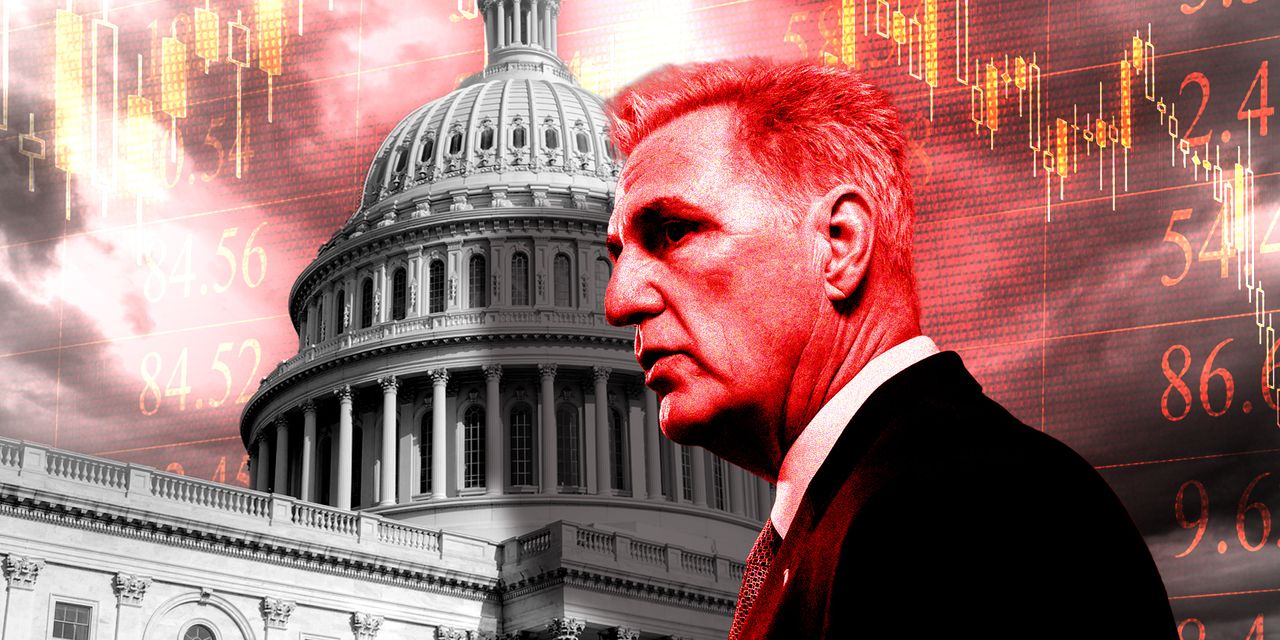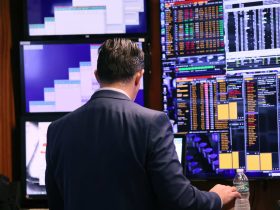The unprecedented ousting of Kevin McCarthy from the U.S. House speaker’s chair last week sparked a round of understandable anguish for investors and market analysts who saw yet more evidence of U.S. political dysfunction.
After all, the move — the result of a vote forced by a handful of hard-right lawmakers in his own Republican party — came after McCarthy had managed to avert a government shutdown the previous weekend. His fatal sin, in the eyes of the rebels, was working with Democrats to get a deal. House Democrats, meanwhile, weren’t inclined to offer McCarthy a lifeline.
Investors argued that the political chaos wasn’t a cause of the selloff in bonds that took long-term Treasury yields to 16-year highs and sent stocks to their lowest since early June, but it was seen as part of a disturbing and long-running pattern.
“We do not expect that this specific event will destabilize markets, but the dysfunction in Washington may add to eroding confidence in U.S. exceptionalism,” said Carl Ludwigson, managing director at Bel Air Investment Advisers, in a note.
The yield on the 30-year Treasury bond
BX:TMUBMUSD30Y
rose 23.2 basis points last week to end Friday at 4.941%, its highest since Sept. 20, 2007. The 10-year Treasury note
BX:TMUBMUSD10Y
yield topped 4.80% on Oct. 3, its highest since Aug. 8, 2007, and ended the week at 4.783%.
Market participants on Friday fixated on a much stronger-than-expected U.S. September jobs report. Stocks initially tumbled, but regained their footing to end the session with solid gains. The bounce saw the S&P 500 index
SPX
turn positive for the week, up 0.5%, breaking a streak of four straight weekly declines, while the Dow Jones Industrial Average
DJIA
pared its weekly decline to 0.3% and the Nasdaq Composite
COMP
gained 1.6%.
Read: U.S. stocks stage a surprising rally on Friday. But can the party last?
No doubt, investors in the week ahead will be focused largely on inflation data as they attempt to assess the Federal Reserve’s likely interest rate path. The September consumer-price index is due Thursday, a day after investors get a look at wholesale price pressures via the September producer-price index.
The week ahead, however, also promises more political drama as divided House Republicans attempt to choose McCarthy’s successor. Given McCarthy’s fate, that successor is seen as less likely to reach across the aisle. Oddsmakers now see an increased risk of a government shutdown when the stopgap funding measure runs out next month.
McCarthy’s removal without a clear successor and with another potential shutdown looming contributes to greater uncertainty around the process of maintaining a functioning government at a time when market volatility is rising, particularly interest-rate volatility, Ludwigson said.
See: Kevin McCarthy ousted as House speaker: Here’s who could replace him
It all comes on the heels of the debt-ceiling showdown in Congress earlier this year, which saw the U.S. narrowly avert a first-ever default. That fight led Fitch Ratings in August to cut the U.S. government’s AAA credit rating to AA+, citing eroding governance over the past two decades.
An earlier debt ceiling fight had prompted S&P Global to strip the U.S. of its AAA rating in 2011. Analysts fear a November shutdown could prompt Moody’s Investors Service to become the last of the three major ratings firms to take away its top rating.
Also read: Wall Street worries U.S. could lose last AAA rating as political chaos fuels government-shutdown fears
Others see much higher stakes. Billionaire investor Ray Dalio, in a Friday LinkedIn post, argued that McCarthy’s removal was a sign of increasing political polarization and “another step away from democracy and toward civil war.”
For financial markets, U.S. governance woes remain very much in the background — and likely not a day-to-day issue for investors.
“It’s a problem and it’s a big problem, but it’s not a new problem, so it’s hard to link the meta issues that have been building for not months or years but really decades to the current market dynamic,” said Christopher Smart, founder and managing partner of Arbroath Group, a consulting firm.
Mark Rosenberg, who co-founded risk-analysis firm GeoQuant, now part of Fitch, told MarketWatch that the U.S. is increasingly taking on some of the characteristics of an emerging market nation, “where governance risk increases around elections” and creates uncertainty around the basic policy orientation of the government.
To be sure, the U.S. isn’t on par with emerging markets, he said. Treasurys, after all, remain the largest and most liquid financial market in the world. U.S. assets aren’t buffeted to the same degree as emerging-market assets.
But an implicit backdrop of political dysfunction “adds to the uncertainty that investors attribute to different economic data and probably makes these selloffs more extreme and volatile than they would have been with these less predictable political patterns,” he said.
GeoQuant has found a correlation over time between its measure of governance risk and the yield on the 30-year Treasury bond
BX:TMUBMUSD30Y
(see chart below).
The U.S. isn’t the only developed market showing increased dysfunction. A selloff in U.K. government bonds, known as gilts, last year sent shock waves across financial markets, forced the Bank of England to intervene, and led to the resignation of Prime Minister Liz Truss, was a “clear expression” of the phenomenon, Rosenberg said.
The ‘mini budget’ of Truss and her finance minister Kwasi Kwarteng, presented last autumn promised large, unfunded tax cuts. Bond investors, seeing the need for more debt to fund the tax cuts, and the likelihood that any resulting consumer spending boost might force the central bank to raise interest rates further, started selling gilts, forcing yields sharply higher. That created massive pain for pension funds, threatening the financial system, prompting action by the BOE and forcing a government U-turn.
Don’t miss: Surging Treasury yields can lead to market fracture. Just ask the U.K.
That was a textbook emerging-market dynamic, Weinberg said: “a policy change and then investors calling a bluff on that policy change.” It’s similar to what investors are used to seeing in emerging markets like Brazil, Poland or Turkey.
“I don’t think the U.S. is there yet,” he said, but a selloff in long-dated U.S. debt that’s being tied to worries over a rising debt load and accompanied by political dysfunction around budgetary matters is eye opening.
Read the full article here











Leave a Reply